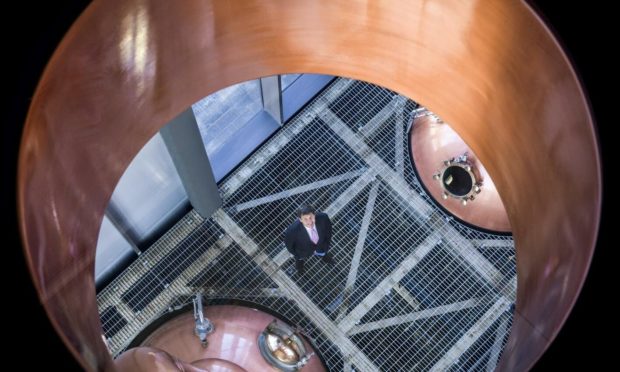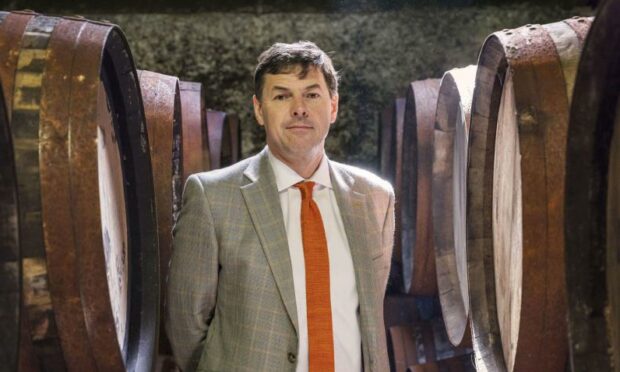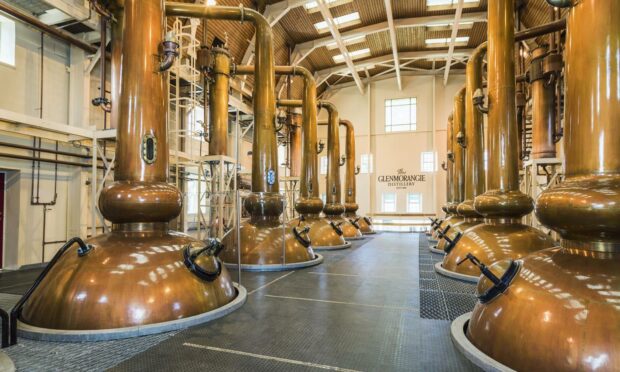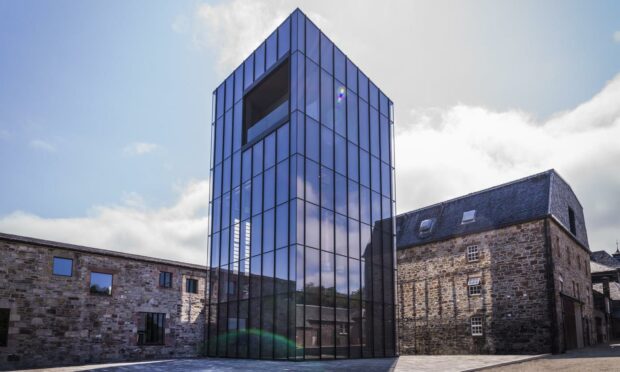Bill Lumsden acquired a taste for whisky in his early 20s.
He’s spent much of his subsequent career trying to find new ways to enjoy a dram.
Now he has a multi-million pound building where he can let his imagination run wild.
A new innovation distillery built by Glenmorangie at its base in Tain is being hailed as a “playground of experimentation”.
The Lighthouse has been inspired by Dr Lumsden’s determination to further push boundaries of single malt.
New distillery not open to the public
The 20 metre high glass walled stillhouse has been planned for five years but is now a new feature on the north landscape.
It stands in stark contrast to the traditional stone buildings of the main distillery, established more than 175 years ago.
The tower offers Glenmorangie’s visitors a glimpse of its two copper stills, modelled on the 12 giraffe-high stills in the main still house.
But while the structure itself is transparent, the work that will go on inside is not so clear and The Lighthouse will not be open to the public.
Above the stillhouse is a purpose-built “secret” sensory laboratory, complete with tasting room and terrace overlooking the Dornoch Firth.
It is here Bill and his team will oversee experiments with whisky’s ingredients barley, water and yeast.
And perhaps other raw materials, which could see a historic move for the company.
The biochemist, who was inspired to use flavours of cake in whisky (Glenmorangie’s A Tale of Cake) and a cup of coffee (Signet) among others, remains coy about where his imagination may run next.
Will it be distilling wheat, oats or corn? Possibly a spirit which doesn’t even use cereals and therefore something that is not Scotch whisky.
‘Nothing is off the table’
“In reality we have the flexibility to do all sorts of bits and pieces here. As far as I’m concerned nothing is on the table and nothing is off the table.”
As a young scientist he wanted to understand where the taste of whisky came from.
Bill said: “I didn’t necessarily want to change it, but I always felt I could improve it in some ways.
“You can only really do that if you are responsible for the production.”
He joined Glenmorangie in 1995, seeing the distillery as “my giant experimental laboratory”, trialling methods in maturation and the use of different barrels.
“Latterly I started to see there were things I couldn’t do in the main distillery.
“So The Lighthouse is to enable me to some of these things that I’ve always wanted to do but haven’t had the capability to try them.
“In terms of every aspect of the primary production I now have an opportunity to do different things there.”
So perhaps not using only barley?
“Yes and it may even not involve using cereals. These are things that would be too risky to try in the main distillery.”
If not cereals, then what?
“I can’t answer that without giving away too many secrets.
“But will this plant allow me to mash bananas for example? That doesn’t mean I’m actually going to do that, but it will change my way of thinking of looking at everything and anything.
People are inquisitive about new products
“Doing things like that would be, for sure, outwith the Scotch whisky regulations.
“If you don’t use cereals then technically you are not making whisky.
“But it’s not unreasonable to me (to do that) and its part of the things I want to try.
“The other side of that is that we don’t necessarily need to use the Glenmorangie brand name on things like that, but we haven’t decided that yet.
“We believe there is demand out there. People are inquisitive for new products, new flavours new experiences.”
Production at The Lighthouse will start shortly but the first new products will be several years away.
Instead the opening is being marked with the release of Glenmorangie The Lighthouse, a limited-edition 12-year-old malt aged in bourbon and sherry casks which were broken up and now embedded in the new distillery’s walls.
Thomas Moradpour, president and CEO of The Glenmorangie Company, believes the experiment is worth it without knowing what it will lead to.
He said: “It’s like getting a new car. You can drive it on any road you want. Doesn’t mean you will, doesn’t mean you won’t.
‘There is no end to the experiment’
“For now we haven’t decided all the roads trips we are going to take. We just have the car.
“This is a distillery that has the capacity for any experiment we can think about, and some we haven’t thought about to address commercial needs that don’t yet exist.
“It’s a very open-ended chapter in our story. There is no end to this experiment. It starts today and continues.”
The Lighthouse has been supported by a £1 million research and development grant from Scottish Enterprise.
Neil Francis, interim managing director of Scottish International Development at Scottish Enterprise, said: “The Scotch whisky industry is one of our country’s proudest success stories and most famous exports, which is why Scottish Enterprise was pleased to support Glenmorangie in delivering this unique, dedicated innovation facility.
“In such a competitive industry, the ability to bring exciting new products to global markets quicker than ever will undoubtedly boost the company’s success, benefiting both the local community and the wider Scottish economy.”
Last year, Glenmorangie Company revealed proposals for around 20 maturation warehouses near the village of Fearn in Ross-shire to support production increases.



